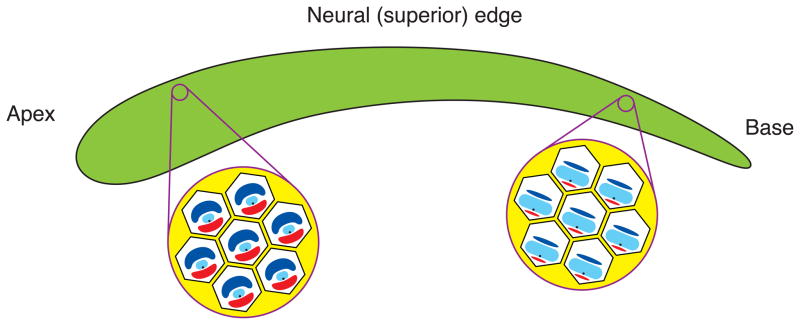Figure 8.
Schematic summary of the results. Hair cells in the chicken’s cochlea display a tonotopic gradient in the sizes of their hair bundles (light blue), which encompass as few as 50 stereocilia at the apex and more than 300 at the base. The putative notch ligand DNER (red), which accumulates at the cellular surface adjacent to the kinocilium (black dot), occurs at a high concentration near the cochlear apex and in progressively lower amounts toward the base. DNER may be dephosphorylated by PTPζ, which is also concentrated toward the cochlear apex but occurs in a complementary pattern within in each hair cell, accumulating at the cellular surface on the edge opposite the kinocilium. Notch (yellow), the receptor for DNER and related ligands, is known to occur in the supporting cells whose narrow apical processes separate all hair cells.

